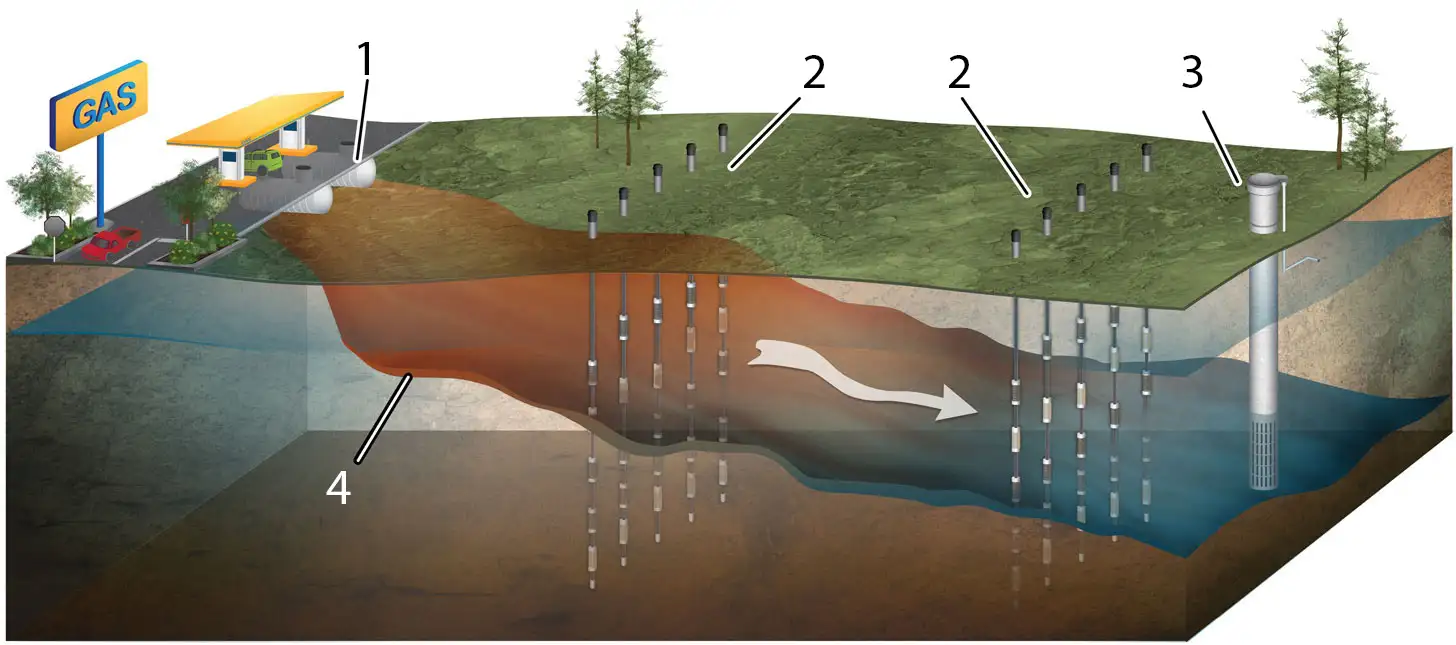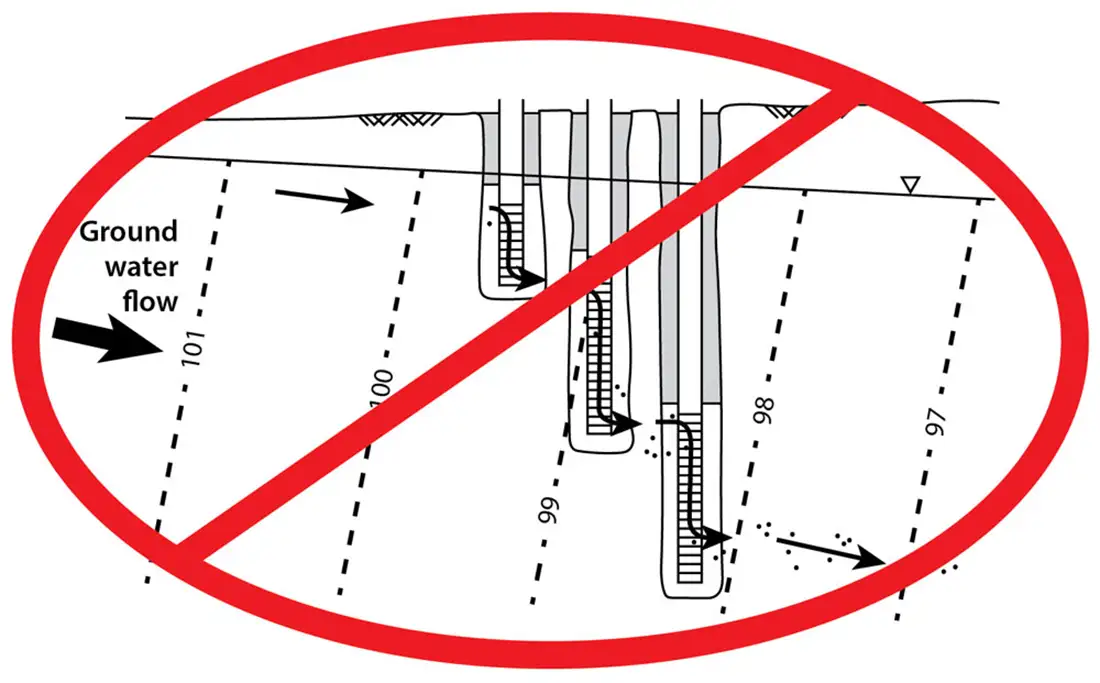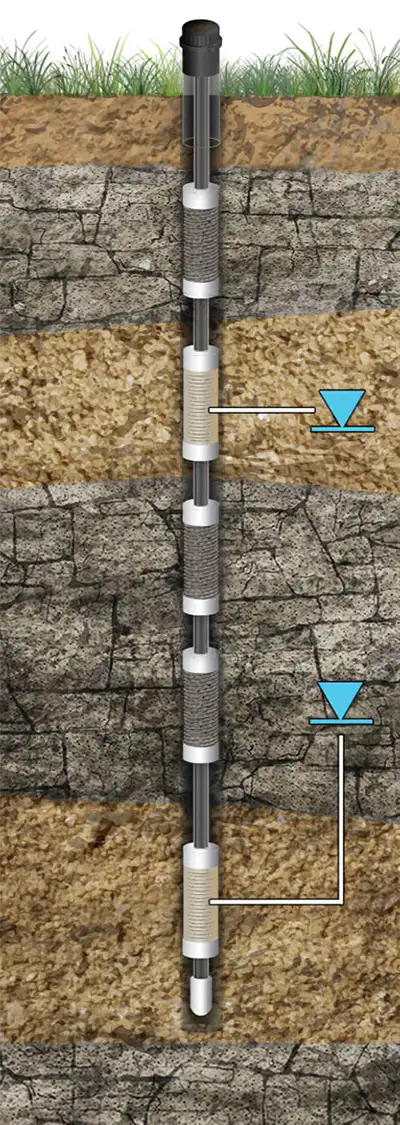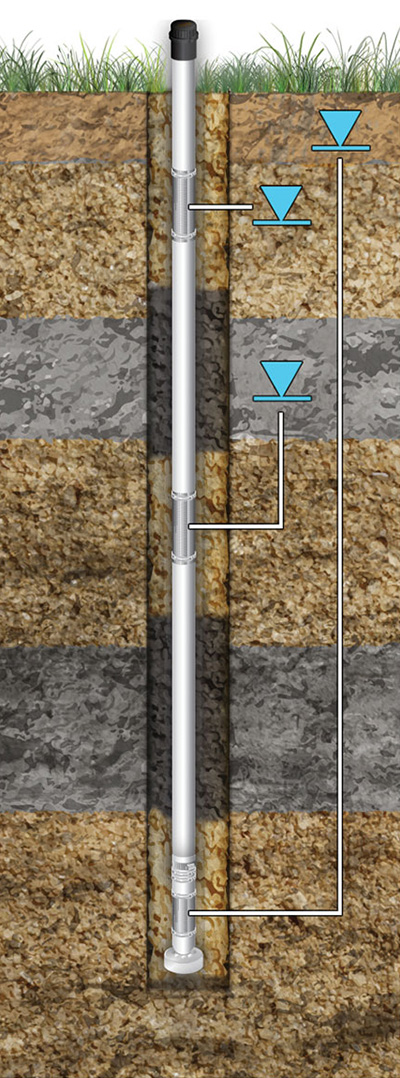Multilevel Monitoring is Essential
Depth Discrete Groundwater Monitoring
Reduce Costs and Field Time

CMT Transects for Mass Flux Assessment
Image Legend
- Source Zone
- Transects of CMT Wells
- Supply Well (Receptor)
- Contaminant Plume
Multilevel Monitoring is Essential. Multilevels provide the most reliable, detailed data for accurate 3-D site assessment. Important advantages include:
Eliminates contaminant mixing in long screened wells – which averages out heads and contaminants, masks narrow zones of contamination and vertical variations, underestimates the extent and concentration levels due to dilution. Multilevels monitor discrete intervals.
Prevents biases due to ambient flow – cross communication of contaminants can occur when different zones in a borehole are not isolated. Properly sealed multilevels avoid ambient flow within a well.
Provides data for Mass Flux Calculations – Calculating the contaminant concentration and flow rate helps determine the maximum contaminant concentration and risk to receptors. A transect of multilevels across the groundwater flow path provides data for mass flux calculations.
Allows optimized remediation design – Using data from multilevels to accurately define the thickness, concentration variations and extent of a plume.
Saves Cost – through reduced permitting and drilling costs; and because narrow tubes allow smaller purge volumes, reduced disposal costs, efficient low flow sampling and rapid response to pressure changes, all reduce field time.

Multilevel systems minimize the risk of producing new contaminant pathways
compared to using well clusters with overlapping adjacent sand packs. (Source: Einarson, 2006).
Typical CMT Multilevel Installations
Showing Differential Water Levels
Typical 3-Channel CMT Multilevel System Installation in Rock with Bentonite and Sand Cartridges

Typical 3 or 7 -Channel CMT Multilevel System Installation using Layers of Bentonite and Sand Backfilled from Surface

Solinst Multilevel Groundwater Monitoring Systems
In addition to the 403 CMT System, Solinst Manufactures two other multilevel systems, each suited to different environments and applications.
The 615ML Multilevel Drive-Point Piezometer has stainless steel monitoring ports connected using 3/4” NPT steel drive pipe and couplings. Dual barb stems allow the connection tubing to create up to 3 or 6 monitoring zones, depending on tubing size. Drive-Point Multilevel Systems can be installed simply using direct push methods, including a manual slide hammer. These systems are easy to transport with portable sampling and level monitoring options (see Model 615ML Data Sheet).
The 401 Waterloo System uses modular components of various casing lengths, sampling ports, and optional packers that are connected to form a sealed casing string. Pumps and/or transducers can be dedicated to each port. All instrument tubing and cabling is contained within these modules and collected at the top of the system at a wellhead manifold. The Waterloo System is ideal for long-term monitoring in bedrock and cased boreholes, and has been used to depths of 1000 ft. (300 m) (see Model 401 Data Sheet).

615ML Multilevel Drive-Point Piezometer

403 CMT Multilevel System

